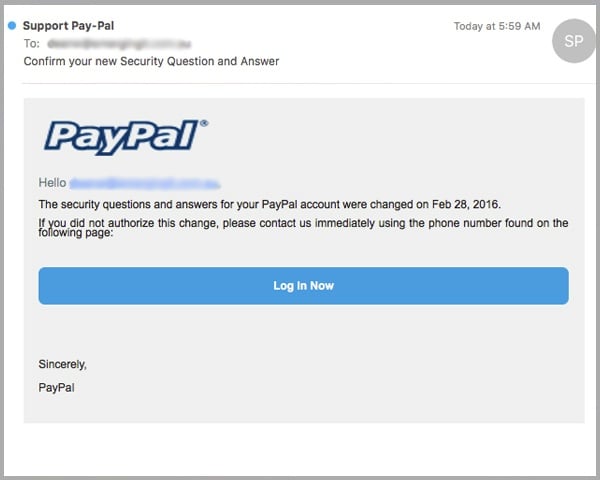

- #Paypal spam email install#
- #Paypal spam email update#
If there’s an urgent need for you to complete something on your account, you can find this information by logging into PayPal directly. They're hoping you'll fall for their sense of urgency and ignore warning signs that the email is fake.
#Paypal spam email update#
Phishing emails are often alarmist, warning you to update your account immediately.
#Paypal spam email install#
Some attachments contain viruses that install themselves when opened. Be particularly cautious of invoices from companies and contractors you're not familiar with. Only open an attachment if you're sure it's legitimate and secure. If you aren’t certain, don’t click on the link. A link could look perfectly secure like Make sure to move your mouse over the link to see the true destination. Always check links in an email before you click them.
Asks you to click on links that take you to a fake website. We never say things like "Dear user" or "Hello PayPal member.” ” Our emails will always address you by your first and last names or by your business name. Uses impersonal, generic greetings, such as “Dear user” or “Dear. PayPal states that you can, ‘Cancel any unwarranted invoices or money requests by logging in to the PayPal website or the PayPal app.’ Never try to contact PayPal through a phone number or email address you’ve received in the Seller note - it’s the scammer you’ll get through to.If you receive a message and are unsure it’s really from PayPal, check to see if it does any of the following: Head to your PayPal account, without clicking any links in the email. What should you do if you receive a PayPal invoice you weren’t expecting? That means whoever has sent this invoice has typed this message to you, including the phone number it isn’t an official security message from PayPal. The most important thing to note, however, is that the PayPal information is underneath a big heading that says, ‘Seller note to customer’. Many phishing scams fall down at their grammar and the note attached to this invoice is no exception, ‘This transaction will reflect on PayPal activity…’ just doesn’t sound right. However, there are some indicators in the email that you’re looking at a scam. Just because it comes through PayPal’s website, it doesn’t make it legitimate. The important thing to remember is that anyone can send a PayPal invoice to anyone else, at any time. As such, even when you head to your PayPal account - without clicking any links in the email - you’ll still see this fraudulent invoice. This is because the fraudulent invoice is sent through PayPal’s application. This means that the sender of the email is PayPal, so it looks a lot more legitimate than it is. This scam has been so effective because scammers are using PayPal's invoicing system. You can see a screenshot of this email at the following link. If you’ve not figured out where this is going yet, the phone number does not connect you to PayPal, and instead calls a scammer who will refund this false payment by relieving you of your PayPal details, and then emptying your account. It also provides you with the number to contact PayPal on. The note in the invoice goes on to state that if you didn’t make this purchase, you can contact PayPal to refund this payment. The note attached to this invoice explains that you have an outstanding payment, and the money will be taken from your PayPal account today. Victims receive an email from PayPal, with an invoice attached. The PayPal invoice scam is a phishing scam that is sent over email. Emails can be about the covid-19 vaccine, the cost of living crisis or subscription services - but the goal is the same, to get victims to pass on their information. We’ve seen a number of different phishing scams claiming to be from trusted businesses, organisations and even family members. These phishing scams are often sent out en masse the scammers contact as many people as possible so they can get as many responses as possible. 
Perpetrators will devise a number of different ways to convince victims to part with their details, usually using something current and relevant. The latest phishing scam is using PayPal to convince victims that they need to pay an invoice for hundreds if not thousands of pounds…an invoice that doesn’t really exist.Ī phishing scam is a kind of fraud where a victim is sent an email, text or is called directly, and convinced through social engineering to disclose their bank details, account details or other personal information.






 0 kommentar(er)
0 kommentar(er)
